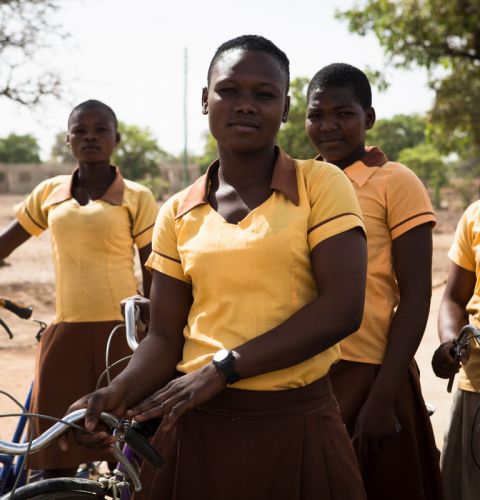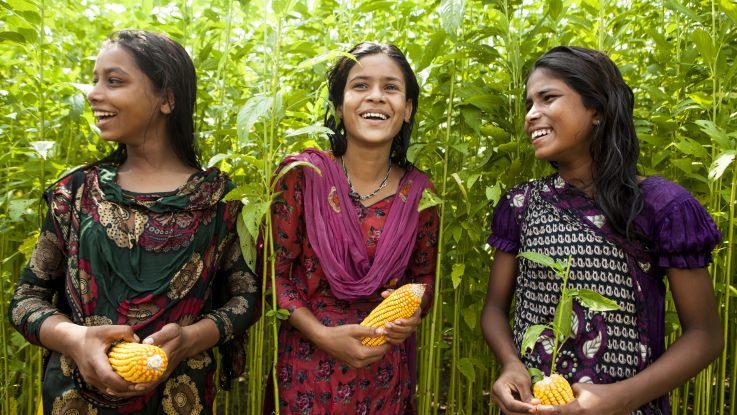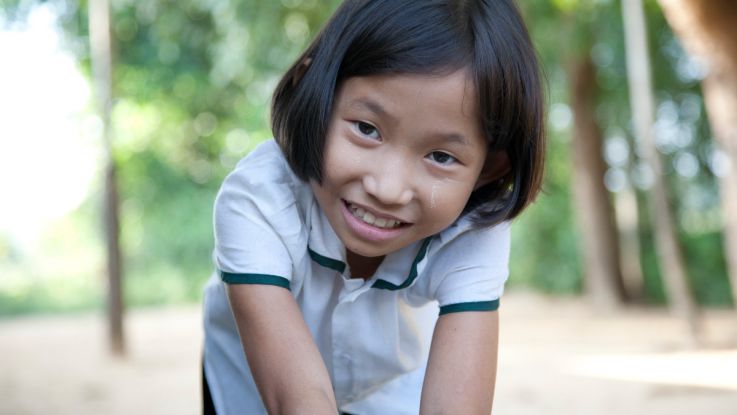Forced child marriage
Where does forced child marriage happen?
Child brides can be found in every region in the world, from the Middle East to Latin America, South Asia to Europe. It is a global problem.
But rates of forced child marriage are most prevalent in sub-Saharan Africa – in countries such as Niger (76%) and Central African Republic (61%), and in South Asia – in countries such as Bangladesh (51%), and India (23%).4
In many communities across these regions, girls are being violently abducted before being forced to marry their captors, usually many years older than them.
Forced child marriage facts and statistics
What are the causes of forced child marriage?
Despite laws against forced child marriage in most countries, various exceptions to the minimum age undermine these laws and make them difficult to enforce. Exceptions include parental consent, authorisation of the court, or local customary or religious laws.
The reasons for child marriage differ from country to country, but in sub-Saharan Africa and South Asia – where the practice is most widespread – the key drivers are gender inequality, and poverty.
Gender inequality
Deep-rooted patriarchal beliefs, the low value placed on girls, and the desire to control women, especially girls' sexuality, underlie child marriage.
Social expectations and norms around the world expect girls to become wives and mothers, and in poorer communities with limited opportunities for education and work it may seem like the alternatives are limited. Even if opportunities are available, social norms that value boys over girls and support rigid gender roles means parents might not think it worthwhile investing in their daughter’s education.
Forced child marriage is also closely linked to female genital mutilation (FGM) – the partial or full cutting of a girl’s clitoris and labia for non-medical reasons – which is considered essential for marriage in many communities, particularly in sub-Saharan Africa.
The social stigma of not following tradition ensures the practice continues.
Poverty
Poverty is the other major driver. In Africa, for example, girls from the poorest households are twice as likely to marry before age 18, as girls from the richest households. Similarly, girls in rural areas are twice as likely to become child brides as girls from urban areas.
For poor families with many children, marrying their daughter off early can mean one less mouth to feed. In addition, there is also a financial aspect due to dowry and bride price traditions.
Dowry and bride price
A dowry, most common in South Asia, is when the bride's family pays the groom's family in money, goods or property. Usually, the younger the age of the girl bride, the lower the dowry, giving parents an incentive to marry their daughters young.
Bride price, most common in sub-Saharan Africa, is the other way round – the groom's family pays the bride's family. The price is often intended to reflect the value of the bride, perpetuating the concept of girls as a commodity and as men's property.
Disagreements over dowries and bride price sometimes cause family disputes that can result in violence.
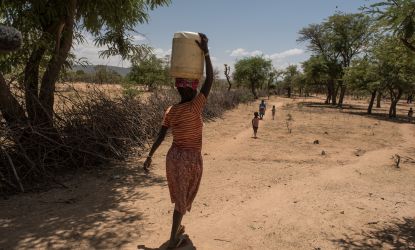
Why Pauline was married as a child
"I did not choose my husband," says 15-year-old Pauline from West Pokot, Kenya. "I don’t like him, but I have to because he is my husband."
Forced to leave school because her parents couldn't pay anymore, Pauline underwent FGM aged 10, and was forced to marry shortly afterwards.
My parents wanted me to get married off so as to get some cows... I could not have avoided it. I did not know that the cut [FGM] meant that I would then be forced to be married. I knew nothing about marriage or pregnancy."
Pauline has a baby girl, Faith, with her husband, and is pregnant with their second child. She is now part of an ActionAid-supported women's group working to advocate against FGM and forced child marriage.
Pauline was forced into child marriage when she was 13, West Pokot, Kenya
Jennifer Huxta/Actionaid
What are the effects of forced child marriage?
Forced child marriage is an act of violence and a violation of girls’ rights. It denies them their childhood, the chance to go to school, to be independent and to choose their own future.
Extremely vulnerable to violence
Girls who marry as children are often married to older men, which intensifies power imbalances in the relationship. Subordinate to their husbands and families, domestic violence by an intimate partner is more prevalent and more severe amongst girls who marry as children, than amongst women who provide informed consent to marry.9
For many girls child marriage subjects them to rape and abuse for the rest of their lives. Isolated from friends and family they have limited means to get support or share what they are going through.
Health and lives at risk
With limited education and decision-making power, girls are not in a position to influence decisions over safe sex and family planning, which puts them at high risk of sexually transmitted diseases including HIV, and of giving birth before their bodies are ready.
Girls are physically unprepared for childbirth, because of the restrictions in movement they face as a girl-child in their community, lack of access to sexual and reproductive health and rights information, as well as not being biologically mature enough to give birth.
Early childbearing puts girls’ lives at risk, and increases the chance of stillbirth, infant mortality, and disabling complications for the mother such as obstetric fistula.
Globally, 21 million girls aged between 15 and 19 give birth each year.10 70,000 girls die during pregnancy and childbirth. This makes complications during pregnancy and childbirth the second highest cause of death for girls aged 15-19 worldwide.11
For girls who have also had female genital mutilation (FGM), sex and giving birth can be excruciatingly painful, and they are at far higher risk of complications from childbirth.
Education cut short
When girls' education is cut short, girls lose the chance to learn the knowledge and skills they need to secure a good job and provide for themselves and their families. Girls who have little or no education are up to six times more likely to be married as children than girls who have secondary schooling.
They also lose the opportunity to be empowered, make friends, and develop social networks and confidence that will help them stand up for their own interests.
As a result, millions of girls continue to be held back and remain living in poverty.
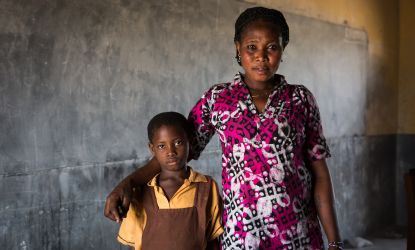
Tackling marriage by abduction
Sanatu Naamue, 34, from Ghana, was abducted by an older man when she was a teenager. "A man saw me and was interested in me," she describes. "He sent three men. They came and carried me away."
Almost 20 years later she is still married. "Since the moment they brought me - from the time they brought me up until now - I have never been happy in the marriage. They call me his wife but we have nothing in common. I wish I was a child and I could go back to school."
Sanatu has to work very hard on the farm to provide for her family because her husband doesn’t support her. She has a younger daughter Sabila and worries that she might be abducted too.
Because I’ve been abducted, I always worry that it will happen to my daughters as well."
ActionAid is working in Sanatu’s village to raise awareness of the problems of child marriage and tackle marriage by abduction.
Sanatu, 34, fears that her daughter Sabila may be abducted and forced into child marriage, Ghana
Ruth McDowall/ActionAid
How ActionAid is working to stop forced child marriage
ActionAid works to end forced child marriage in 17 countries across South Asia and sub-Saharan Africa. Our local staff tackle it on many fronts – from bringing perpetrators to justice, to changing minds and behaviours in local communities, to campaigning at a regional, national and international level to influence policies and legislation to end violence against girls.
ActionAid trains and supports local networks of women and men to reach out to their neighbours, families, officials and village leaders to highlight the negative effects of early, forced child marriage and pregnancy, and how keeping girls in school can benefit the whole community.
Educated girls are better equipped to contribute to their own well-being and that of their future families, and contribute to reducing poverty in their communities and countries as a whole.
17
countries, across South Asia and Africa, are part of ActionAid's work ending forced child marriage.
322,000
women helped to challenge violence against women and girls and harmful traditional practices like FGM in a single year.
1,080
community-led projects supported women and girls to challenge harmful traditional practices, including FGM, in a single year.
The community-led anti-violence teams (COMBAT) confront the perpetrators of forced child marriage directly, either face to face or through formal letters, and work to ensure girls at risk are returned to their families. If captors do not co-operate, the teams work with the authorities to bring them to justice.
ActionAid trains female teachers to run girls’ clubs in schools and communities, to empower girls to understand and live out their rights, including saying no to forced child marriage. The women are role models to the girls, showing them that finishing their education is possible.
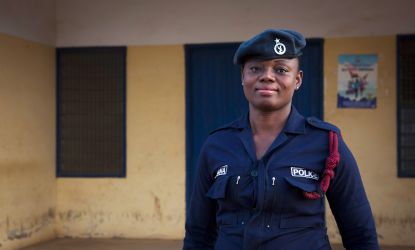
Rescuing girls abducted for forced child marriage in Ghana
Lydia, 34, is a detective policewoman in Tumu, northern Ghana. Since 2010, she has been working with ActionAid to rescue girls who have been abducted into marriage and help return them to their families.
"I deal with one to three cases a week of forced child marriage," she says. “The youngest girl I have had to save was 15. When you find them they are miserable – not happy being with the man, especially if taken forcibly to the man’s place.
“On a normal day people come to report cases like aggression and forced child marriage in my office. Whenever they come to report it I go round to investigate the case. If it’s true, I go and bring the child back to the office and bring the child’s family and the complainant’s family to solve the case and get the child back to school.
The problem is improving, through the support of NGOs. ActionAid staff will go to villages and talk to people. Because of that it has reduced and is no longer as high as it was. Now we are educating the parents and children too.”
Lydia, police detective helping tackle child marriage in Ghana
Ruth McDowall/ActionAid
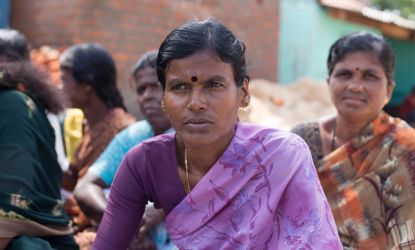
How women's groups protect girls from forced child marriage in India
Bhagya, 45, is part of a co-operative women’s group that has done amazing work stamping out forced child marriage in her village in India, and helped her protect one of her own relatives.
With the support from local ActionAid staff and our partner organisation, called Swaraj, the women raised awareness about the negative consequences of forced child marriage, the value of girls staying in school, and girls' rights to choose if, when and who they marry.
Soon afterwards, one of Bhagya's girl relatives was due to be married, but with the support of the group she was able to put a stop to the marriage and delayed it until she was 18. She says:
In the past young women were marrying at 15 or 16 years... This affects their health, as girls are likely to get pregnant in their first year of marriage."
Now, the average age of marriage in the community has risen above the legal age, with most women not marrying until they are 22 years old.
Bhagya, 45, and her local women’s group have helped stop child marriage in their village in India
Richard Carter/ActionAid
Bespoke solutions for different communities
Because the way that children are married off varies from country to country, it is vital to work with communities to find specific solutions to protect girls becoming child brides.
For example, in the Upper West Region of Ghana, many teenage girls are being violently abducted on their way to school to be forced into child marriage. Local ActionAid staff reports that more than 50 girls a year are being taken.
Girls are most at risk during rainy season, when they must walk through fields of long grass to get to school. Men are often waiting to capture them, and take them by motorbike to faraway villages when they least expect it.
One initiative ActionAid is using to prevent this happening, with great success, is giving bicycles to girls at risk of forced marriage. The bikes have two functions: personal safety – the bikes cut down the girls’ long and dangerous route to school, and the ActionAid stamp deters abductors from harming them, and secondly – with a faster journey, more girls are staying in school, and girls in education are less likely to be married young.
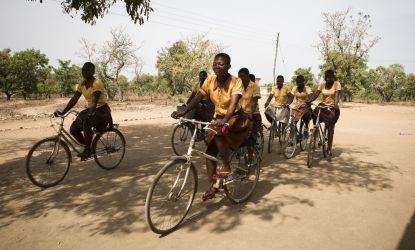
Why bicycles help protect girls from abduction and forced child marriage
Theresa, 17, lives in a village in northern Ghana. She used to wake up at 3:45am to walk her three hour journey to school using a torch. She was scared of being chased by men, as she had heard of cases of men abducting girls for marriage. But being given a bicycle by ActionAid has changed that.
“I got my bike in 2015," she explains. "I was not happy walking to school before because of the long distance and I was scared of someone snatching me. When it’s rainy season the grass always grows really tall and I would be afraid men might be hiding in the grass.
ActionAid bought us our bicycles and I got given mine at school. I felt so happy, because everyone knows this is Theresa’s bicycle and nobody can take it from me.
"I’m not afraid that boys will catch me on the way. Now I know I can go faster if someone is chasing me. If I hadn’t been given the bicycle I might not have come back to school. Now I have dreams to become President of Ghana."
Theresa can now cycle to school without fearing abduction
Ruth McDowall/ActionAid
Is forced child marriage becoming less common?
Globally, the practice of forced child marriage is slowly declining, but as populations grow, hundreds of millions of girls will continue to be at risk.
Unless we speed up progress to end forced child marriage, the global number of child brides will remain the same by 2050.
Footnotes
- 2https://data.unicef.org/topic/child-protection/child-marriage/
- 4https://www.girlsnotbrides.org/learning-resources/child-marriage-atlas/atlas/
- 5https://data.unicef.org/resources/is-an-end-to-child-marriage-within-reach/
- 6https://www.un.org/sustainabledevelopment/gender-equality/
- 7UNICEF, Child marriage database, 2020
- 9Spencer, D. (2015), 'To protect her honour: Child marriage in emergencies – the fatal confusion between protecting girls and sexual violence'
- 10https://www.who.int/news-room/fact-sheets/detail/adolescent-pregnancy
- 11https://www.who.int/news-room/fact-sheets/detail/adolescent-pregnancy
Page updated 22 January 2025
